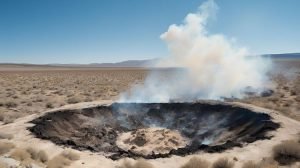The road to burn pit medical retirement can be confusing. You served your country with honor, but now face health issues due to military burn pits. This article offers key information on burn pit medical retirement, covering eligibility, the claims process, and available resources.
Table of Contents:
- Understanding Burn Pit Exposure
- Health Issues Linked to Burn Pits
- The PACT Act and Presumptive Conditions
- Eligibility for Burn Pit Medical Retirement
- Navigating the Claims Process
- Burn Pit Medical Retirement: Financial Implications
- Resources for Veterans
- FAQs about burn pit medical retirement
- Conclusion
Understanding Burn Pit Exposure
Burn pits were commonly used for waste disposal in combat zones like Iraq and Afghanistan. They incinerated everything from plastics to medical waste. The resulting smoke exposed veterans to toxic fumes and airborne hazards, impacting their health.
Health Issues Linked to Burn Pits
Burn pit smoke exposure can lead to respiratory issues, such as asthma and constrictive bronchitis. The VA recognized this link in 2014. The Labor Department also linked burn pit exposure to a contractor’s lung disease.
Some veterans develop severe illnesses, including various cancers. The PACT Act provides support and resources for veterans with these presumptive conditions. Many veterans also experience joint pain after being exposed to open burn pits.
The PACT Act and Presumptive Conditions
The PACT Act is groundbreaking legislation for veterans exposed to burn pits. It designates certain health problems as presumptive conditions related to toxic exposure. This means veterans don’t need to prove a direct service connection for their medical condition.
This includes respiratory illnesses and various cancers. The PACT Act expands veterans health care access and veterans benefits. In its first year, over 458,659 PACT Act claims delivered over $1.85 billion in benefits to veterans and survivors.
Eligibility for Burn Pit Medical Retirement
Who qualifies for burn pit medical retirement? You need a qualifying condition from burn pit exposure that makes you unfit for duty and a discharge other than dishonorable.
Specific locations and service periods may presume exposure, expediting claims. The PACT Act broadens eligibility, granting thousands of service members consideration.
Navigating the Claims Process
Applying for benefits related to military service exposures can be challenging. Start by registering with the Airborne Hazards and Open Burn Pit Registry. Over 330,000 veterans and service members have joined this resource.
Gather your medical records, service records, and supporting evidence. You can find this documentation from several sources, including DFAS. Organizations like the DAV can assist you in locating necessary paperwork.
Complete the required VA forms: 21-526EZ for initial applications and 20-0995 for reapplications. An accredited representative can help with this process.
Burn Pit Medical Retirement: Financial Implications
Burn pit medical retirement provides financial support through monthly payments. Compensation ranges from $1,598 to $39,304 annually, depending on the illness. In 2013, the average compensation for Gulf War veterans was $11,756.
Disability ratings provide access to additional benefits. Medical retirement payments and VA disability compensation are not federally taxed. They don’t affect Social Security or military retirement income.
Some lawmakers advocate for increased compensation for burn pit exposure, potentially up to $160,000. More details on this proposal are forthcoming. This combat-related special compensation aims to address the unique health challenges faced by those exposed to toxic burn pits.
Resources for Veterans
Various organizations offer assistance during this transition. The VA is a primary resource. The DAV (Disabled American Veterans) provides valuable help, including with filing for compensation.
Don’t hesitate to contact these groups for guidance throughout your burn pit medical retirement journey. They are dedicated to helping veterans receive medical retirement.
FAQs about burn pit medical retirement
Do you get disability for burn pits?
Yes, you can receive VA disability compensation for burn pit-related illnesses. The PACT Act presumes service connection for many conditions, making the process easier.
What is the average compensation for burn pit exposure?
Yearly compensation for burn pit exposure varies from $1,598 to $39,304. The amount depends on individual circumstances, conditions, and VA disability rating.
How much is VA disability for a burn pit?
VA disability compensation for burn pits is determined by the severity of your condition and its impact on your life. This disability evaluation, including any plastics exposure, determines benefit levels.
What are the 23 presumptive conditions for burn pit exposure?
Presumptive conditions include a range of cancers and respiratory problems. For detailed information, refer to official VA resources on presumptive cancers. You can also join the open burn pit registry to document your exposure.
Conclusion
Burn pit medical retirement is vital for veterans. From eligibility to the application process, resources are available. The PACT Act signifies progress, recognizing the impact of burn pit exposure.
This commitment provides more support for veterans who served bravely. It allows easier transitions to civilian life and better health outcomes. Impacted individuals should consult with veteran organizations and military branches, like the DAV, to document their condition and receive support for medical and financial transitions.
This post is for informational purposes only and is not financial or legal advice. It does not replace official guidance from governmental or military departments.


